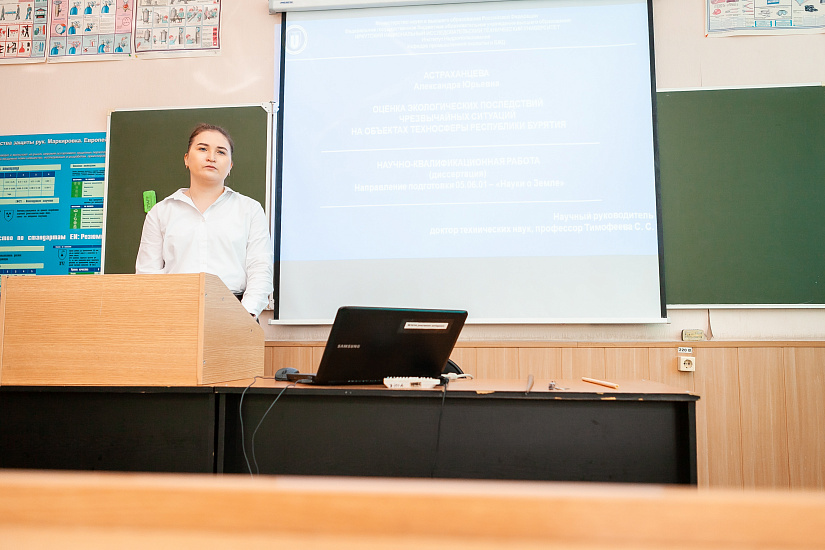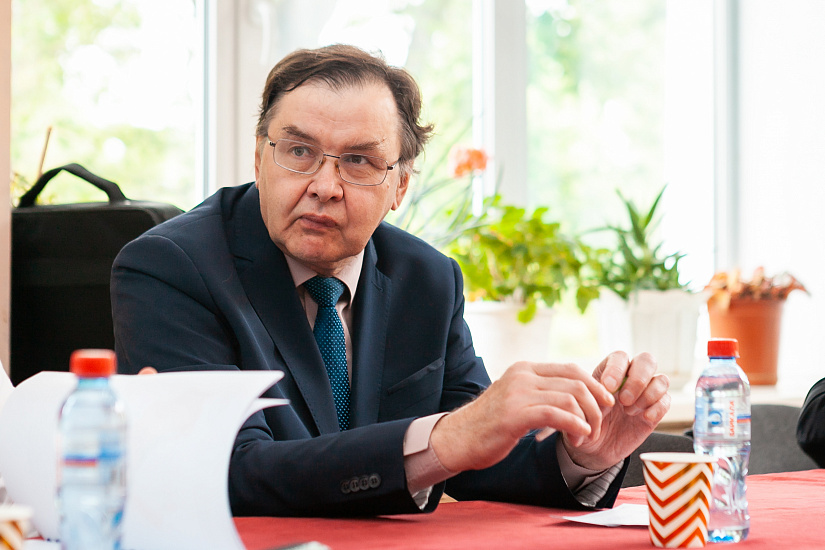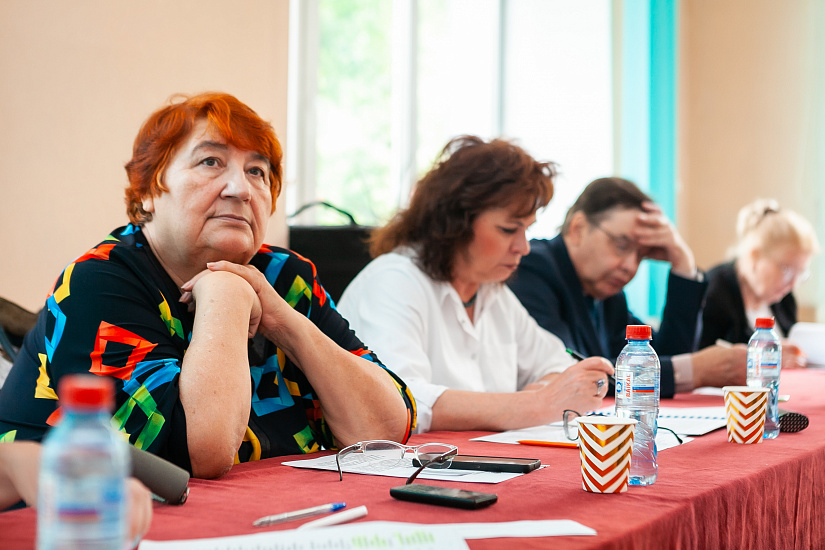INRTU PhD Student Evaluation of Environmental Impact of Emergencies at Techno sphere Facilities in Buryatia
Alexandra Astrakhantseva, a PhD student of the Department of Industrial Ecology and Life Safety, successfully delivered a scientific report in which she assessed the environmental impacts of industrial and technological hazards at Buryatia's facilities. Majoring in Earth Sciences (focus area "GeoEcology of Oil and Gas Industry in Mining and Metallurgy"), she passed her state exams in May and went on to defend her scientific survey in June.
Her research aims to improve comprehensive risk assessment frameworks of environmental impacts of emergencies. As the focal object of study, Buryatia is a region with developed industrial and agricultural infrastructure, unique terrain and climate, diverse flora and fauna. More than 50 industrial enterprises in eight leading sectors of the economy operate in the republic.
Affirming the urgency of the research topic, Alexandra noted the absence of standard methodologies for assessing environmental impacts in the Russian Federation. She studied the industry-specific legislation and statistics on emergencies in the Republic of Buryatia. Her findings revealed human and wildfires cause the greatest damage to nature, with the most severe fire case (in 2014) accounting for 0.57% of the Gross Regional Product. In addition, she identified major environmental stresses, ranked man-made and natural sources of emergencies and elements of Buryatia's economy by their threat of emergencies.
According to Alexandra, road, air and rail transport facilities, chemical and mining enterprises are the main sources of environmental hazards in the neighboring republics. Ulan-Ude, Selenginsk, and Severobaikalsk companies 'contribute' to pollution. Technogenic accidents prevail in Tunkinsky District whereas in Zaigrayevsky and Muisky Districts, accidents on railroads and heating networks often occur in winter. Kabansky District leads in the number of burning peat bogs and subsequent breakage of the coastal ice of Lake Baikal. The Barguzin valley is prone to strong earthquakes, rains and snowfalls.
"In this work, algorithms for assessing emergency situations (ES) in administrative-territorial formations were applied for the first time in relation to Buryatia," said Alexandra.Alexandra improved the mathematical formula for expressing density factors of burnt trees and the coefficient of hollowness of forests and other tracts. She is also creating a digital model for managing unaccounted environmental load based on emergency ranking. This allows the risk-based approach to adopt an algorithm for effective administrative decisions for the management of specific areas.
The research study describes first part of the numerical model, to be completed at the time of the publication of the dissertation. Alexandra proposed a computational problem performed on Microsoft Excel. The problem is adapted to solve her methodology for assessing the environmental impacts of emergencies. The program interface allows recording statistics on emergencies and it is possible to analyze and replenish the database.
Elena Rush, head of the department of techno-sphere safety of Institute of Railway Transport chaired the attestation commission. Also in the commission were, Svetlana Timofeeva and Larisa Belykh, professors of the Department of Industrial Ecology and Biodiversity of INRTU, Evgeny Zilov of the Faculty of Biology and Soil Science of Irkutsk State University, and Tatiana Afonina, professor of Irkutsk State Agricultural University named after A.A. Ezhevsky.
In the experts' opinion, Alexandra deserves an "excellent" grade and the qualification of "teacher-researcher". Elena Rush advised Alexandra to defend her work in St. Petersburg University of the Russian Emergencies Ministry, and to publish in the journals of the educational institution.
Noteworthy is that during Ms. Alexandra Astrakhantseva postgraduate studies, she prepared 19 scientific publications and spoke at forums in Irkutsk, Tomsk, Mirny and Chita.
Photos by Arseny Chekmariov













